This Month's Pick For Movie of the Month by Classic Movie Madness - Classic Movie Madness
Main menu
- Home Page
- Featured Movie
- Double Feature
- Screen Legend
-
Reviews
- All Reviews
- Movie of the Month
- Double Feature
-
Cast and Crew
- Index
- Actors
- Directors
- Crew Members and Everyone else
- Producers and Other Evildoers
- Insane Rantings
- Now Showing
- Shop
This Month's Pick For Movie of the Month by Classic Movie Madness

 |
Nosferatu (1922) |
||||||||||||||
|
|||||||||||||||
|
"You will have a marvelous journey. What matter if it costs you a bit of pain - |
|||||||||||||||
|
Nosferatu! Vampire, the undead bringer of death. A word steeped in as much mystery as the creature it describes. Most sources readily attribute the etymology of the word to stem from the old Slavic "nesufur- |
|
||||||||||||||
|
|
|||||||||||||||
|
|
|||||||||||||||
|
|
|||||||||||||||
|
Regardless of the word' exact origins Vampire and Nosferatu have become nearly interchangeable in modern language. With the latter suggesting a more unworldly, grotesque and monstrous incarnation than the prior. The very sub- WARNING : May contain Spoilers. |
|||||||||||||||
|
From the very first an uneasy tone is truck in the movie, and no I don't mean the score as this is a silent film. Rather through the unsettling story and selection of somewhat odd characters. As in the example of Ellen. When our protagonist brings his wife some freshly cut flowers, her reaction is one of sadness rather than joy. Instead of accepting it as an expression of his love and affection towards her she questions why he had to "destroy the flowers". Proceeding to stroke the bouquet as though to console the flowers for their loss or sacrifice. But more on this later. |
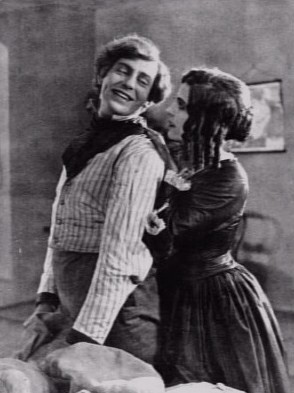 |
||||||||||||||
Jonathan Harker became Thomas Hutter, Mina was transformed into Ellen, Renfield to Knock and most notably Count Dracula himself became the ghoulish Count Orlok. One can further only surmise that the the Professor Bulwer character must have been inspired by Van Helsing.
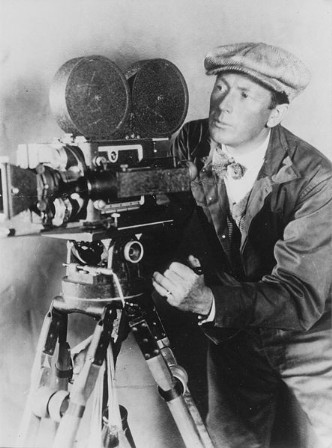
This ploy was, unfortunately for Murnau, not successful and when Bram Stoker's widow, Florence Stoker, caught wind of the movie a series of lawsuits ensued. The convoluded details of which go beyond the scope of this review, but the result was a court order mandating that all copies and negatives of the film were to be burnt. Luckily a few sparse copies survived(technically in violation of said order) and were themselves copied over the years and distributed internationally. Despite the fact that the movie was made without the consent of the proper rights holders, despite the fact that it was ordered destroyed by law – it survived. Like the titular undead creature the movie exists today even though it should not. And for this monster movie and classic movie fans around the world can be immensely grateful.
The movie starts with Knock, a realtor by trade as the inter titles inform us, receiving a letter from Count Orlok informing him of his intent to purchase a property in the town. The letter is written in pictograms and symbols reminiscent of the occult, the fact that Knock can read this suggests that he may already be in Orlok's service to some degree. Knok in turn tempts the young Harker, I mean Hutter, into traveling to Orlok's castle, where he is to offer Count Orlok a
large property situated nearby his own residence. The allure of adventure and the promise of a handsome commission from the sale of the property is simply too much for Hutter to refuse and he promptly agrees.
Upon relating the news to Mina, I mean Ellen – I keep doing that, Hutter says he must travel to the "country of ghosts and robbers" (although it is referred to simply as the "land of phantoms" in the rest of the film). She is visibly grief stricken by the news, a stark contrast to his almost boyish enthusiasm and clear thirst for adventure.
Upon reaching the foothills of the Carpathian mountains(where Orlok's Castle is situated), Hutter decides to spend the night at an inn. The people all seem uneasy and on edge(typical of this kind of movie where the brash young city lad ignores the rustic old man's sage advise and pushes onwards toward certain doom). Later that night a hyena is seen lurking about the outside of the inn which causes all of the horses to break free and flee into the wilderness. Hutter later finds a book in his room concerning vampires, after reading only a page or two he throws it arrogantly to the side and laughs off the book's prophetic words.
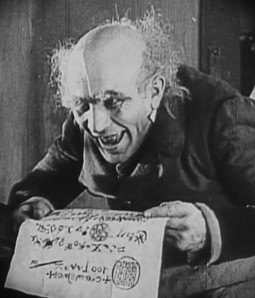
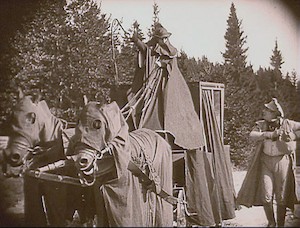
The next day Hutter reaches the proverbial point of no return where he literally has to cross the divide between two worlds. His carriage comes to an abrupt halt at a river crossing and the drivers advise him that they have reached the border to the land of phantoms and that they dare not go further "not even for a fortune". Again Hutter laughs at them and proceeds to cross the bridge on foot.
No sooner has he done so does a ghostly carriage, dressed uniformly in black, arrives to collect him. The driver beckoning him to enter without ever saying a word. The following sequence achieves tremendous
dramatic effect. The footage of the carriage ride was sped up and printed in negative. The result is a nightmarish visual that seems to defy the laws of nature, as the otherworldly carriage races at unnatural speeds over the demonic terrain.
When Hutter reaches the castle we get our first glimpse of Max Schreck as Count Orlok. As Hutter enters the castle grounds Orlok greets him from the shadows, slowly stepping into the moonlight to make himself known. Like an apparition gradually materializing into sight. We are presented with a misshapen creature with bad posture, rodent like features and fingers that conjure up an image more of claws than hands.
These scenes were almost all shot on location in the Carpathian mountains and at Orava Castle in northern Slovakia. Orava castle has since been fully restored and today serves as a Museum and very popular local tourist attraction.
The castle itself is eerily lifeless and empty. Orlok informs Hutter that his servants have all retired for the night as it already nearly midnight, yet even during the day we never see a living soul other that Hutter in
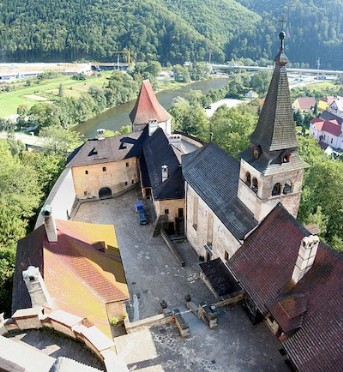

the castle. On his second night in the castle Orlok's true nature is revealed to Hutter. As soon as our vampire count has all the necessary documents he needs from Hutter in order to complete the sale of the property he makes his move, entering Hutter's room when he is meant to be asleep to feed on him. At the same time Marnau cuts to scenes where Ellen is seen sleepwalking and crying out in warning to her beloved just as Orlok is set to attack.
Shadows and obfuscation form a strong theme throughout the entire movie. None of the violence really occurs on-
source, creeping ever closer to finally engulf the victim in darkness. This technique will be used several times in the movie and the word shadow appears a few times on the title cards as well.
Returning to Wisborg, or arriving in the case of Count Orlok, we find that Knock has "gone out of his mind" and has been institutionalized. He has become obsessed with insects, blood and proclaims that "the master is coming, the master is here!".
Orlok travelled by ship, having murdered the entire crew to sustain himself during the journey, bringing with him a small army of rats. The abandoned ship and the rats soon set the town into a fear induced panic about the black plague. This provides ample cover for Orlok to kill as many people as he wills. With the death toll mounting and the

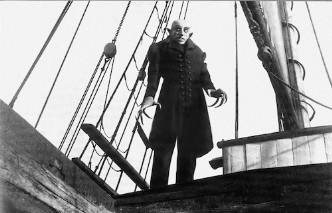
towns folk' inability to do anything about it, they aim their frustration at Knock and he is soon made a scapegoat for the for the desperate situation hey find themselves in.
In the mean time Ellen discovers the book that Hutter found during his stay in the Carpatians. She reads that a vampire can only be destroyed if a woman pure of heart were to give of herself willingly to the vampire, in so doing to make him "forget the cock's first crowing".
She resolves to sacrifice herself in order to save the town. She leaves a final message for Hutter in a piece of embroidery she was working on, the words : "Ich Liebe Diech"(I Love You). That night she opens her bedroom window as an invitation for the count to enter. Then feigning illness she dispatches Hutter to fetch a doctor. Her plan works as Orlok enters her room when she
is alone, unable to resist he feeds on her. Having completely lost track of time Orlok is destroyed by the first rays of sunlight to enter the open window, leaving only a smoldering pile of ash.
Nosferatu is a wonderful example of the German expressionist movement of the early 1920's, the growing freedom in expression and vision that movie makers felt at the time is clearly evident here. The importance and influence of the movie is felt even to this day. Considered as the seminal vampire movie, or at least the first "Dracula" movie this is a must see for anyone interested in the genre.


The Classic Movie Master can confidently recommend this gem to not only horror movie fans but classic movie enthusiast in general. A very solid 3 ½ pills out of five on the madness meter.
Well worth the medication!

3 ½ pills out of 5
Written by The Classic Movie Master
Posted 06 April 2013